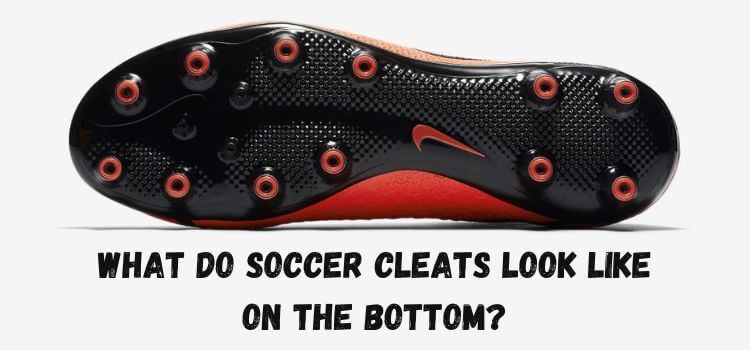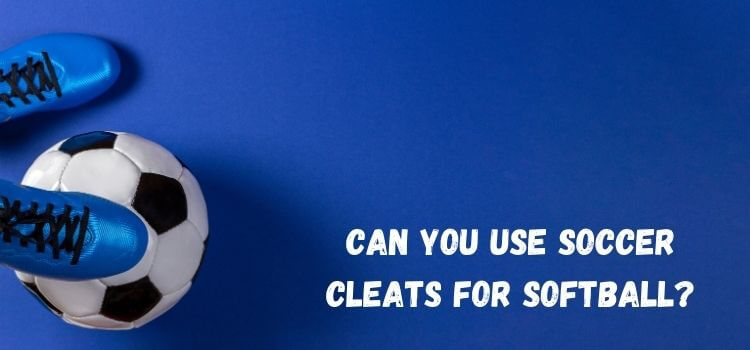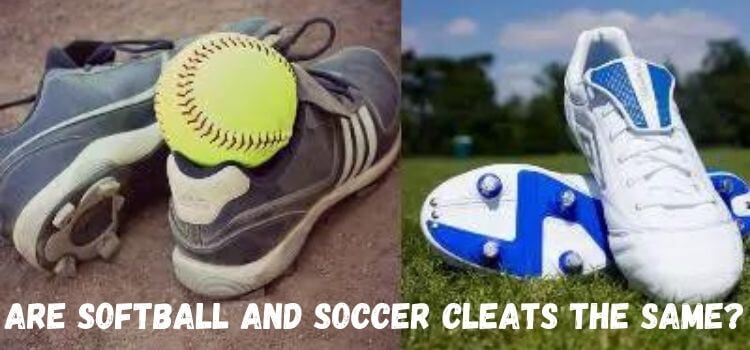As an Amazon Associate, I earn from qualifying purchases
In this article, we’ll delve into what soccer cleats look like on the bottom, exploring various components such as stud configurations, outsole types, and traction patterns.
Soccer cleats are a vital piece of equipment for any soccer player. They are designed to provide traction, stability, and support on the pitch, enabling players to perform at their best. While the entire cleat plays a crucial role, the bottom, or the outsole, is particularly important as it directly interacts with the playing surface.

Introduction to Soccer Cleats
Soccer cleats, or football boots, are specially designed footwear worn by soccer players. They are engineered to optimize performance on the field by providing grip, agility, and comfort.
The bottom of soccer cleats, known as the outsole, is where the magic happens. It determines how well a player can maneuver, accelerate, and change direction during gameplay.
Anatomy of Soccer Cleats
Upper
The upper part of soccer cleats typically consists of synthetic materials or leather. It provides protection, support, and touch on the ball.
Midsole
The midsole offers cushioning and support for the foot, enhancing comfort during prolonged periods of play.
Outsole
The outsole is the bottom part of the cleat that makes direct contact with the ground. It plays a crucial role in providing traction and stability.
Types of Outsoles
Firm Ground (FG)
Firm ground outsoles feature molded studs suitable for playing on natural grass surfaces. They provide excellent traction and stability.
Soft Ground (SG)
Soft ground outsoles have longer metal studs designed for wet or muddy conditions. They offer enhanced grip on smooth surfaces.
Artificial Ground (AG)
Artificial ground outsoles are designed for synthetic turf surfaces. They feature shorter, more numerous studs to provide optimal traction.
Turf (TF)
Turf outsoles have small rubber studs suitable for artificial turf or hard ground surfaces. They offer superior grip and durability.
Indoor (IN)
Indoor outsoles are flat and non-marking and designed for indoor soccer courts. They provide traction without damaging the playing surface.
Stud Configurations
Blade
Blade studs are long and thin, offering excellent traction and stability on firm ground surfaces.
Conical
Conical studs are circular and provide 360-degree traction, ideal for agility and quick movements.
Combination
Combination stud configurations feature a mix of blade and conical studs, offering versatility for various playing surfaces.
Material of Outsoles: Soccer Cleats Look
TPU
Thermoplastic polyurethane (TPU) outsoles provide lightweight durability and flexibility and are suitable for all playing surfaces.
Rubber
Rubber outsoles offer superior grip and traction, ideal for wet or slippery conditions.
Carbon Fiber
Carbon fiber outsoles are ultra-lightweight and offer excellent responsiveness and energy return, enhancing performance on the field.
Traction Patterns
Chevron
Chevron traction patterns feature V-shaped studs that provide stability and grip in multiple directions.
Circular
Circular traction patterns offer 360-degree traction, allowing for quick turns and acceleration.
Waffle
Waffle traction patterns feature small, interconnected studs that distribute pressure evenly, reducing the risk of slipping.
Conclusion: Soccer Cleats Look
The bottom of soccer cleats plays a crucial role in a player’s performance on the field. Understanding the anatomy of soccer cleats, including the outsole, stud configurations, and traction patterns, is essential for choosing the proper footwear for optimal performance.
Frequently Asked Questions (FAQs)
Yes, soccer cleats have various outsoles for different playing surfaces, such as firm ground, soft ground, turf, and indoor courts.
Blade studs are longer and thinner, providing stability on firm ground, while conical studs offer 360-degree traction for agility and quick movements.
Carbon fiber outsoles are lightweight and offer excellent responsiveness, but the choice ultimately depends on personal preference and playing style.
While possible, it’s not recommended as it may affect traction and durability. It’s best to use cleats explicitly designed for the intended playing surface.
It’s recommended that soccer cleats be replaced every season or when they show signs of significant wear and tear to maintain optimal performance and reduce the risk of injury.
Read Our More Articles
- Can You Use Soccer Cleats for Lacrosse? A Comprehensive Guide
- Are Lacrosse Cleats the Same as Soccer Cleats? An In-Depth Look
- Are Laceless Soccer Cleats Good? A Comprehensive Guide
As an Amazon Associate, I earn from qualifying purchases


